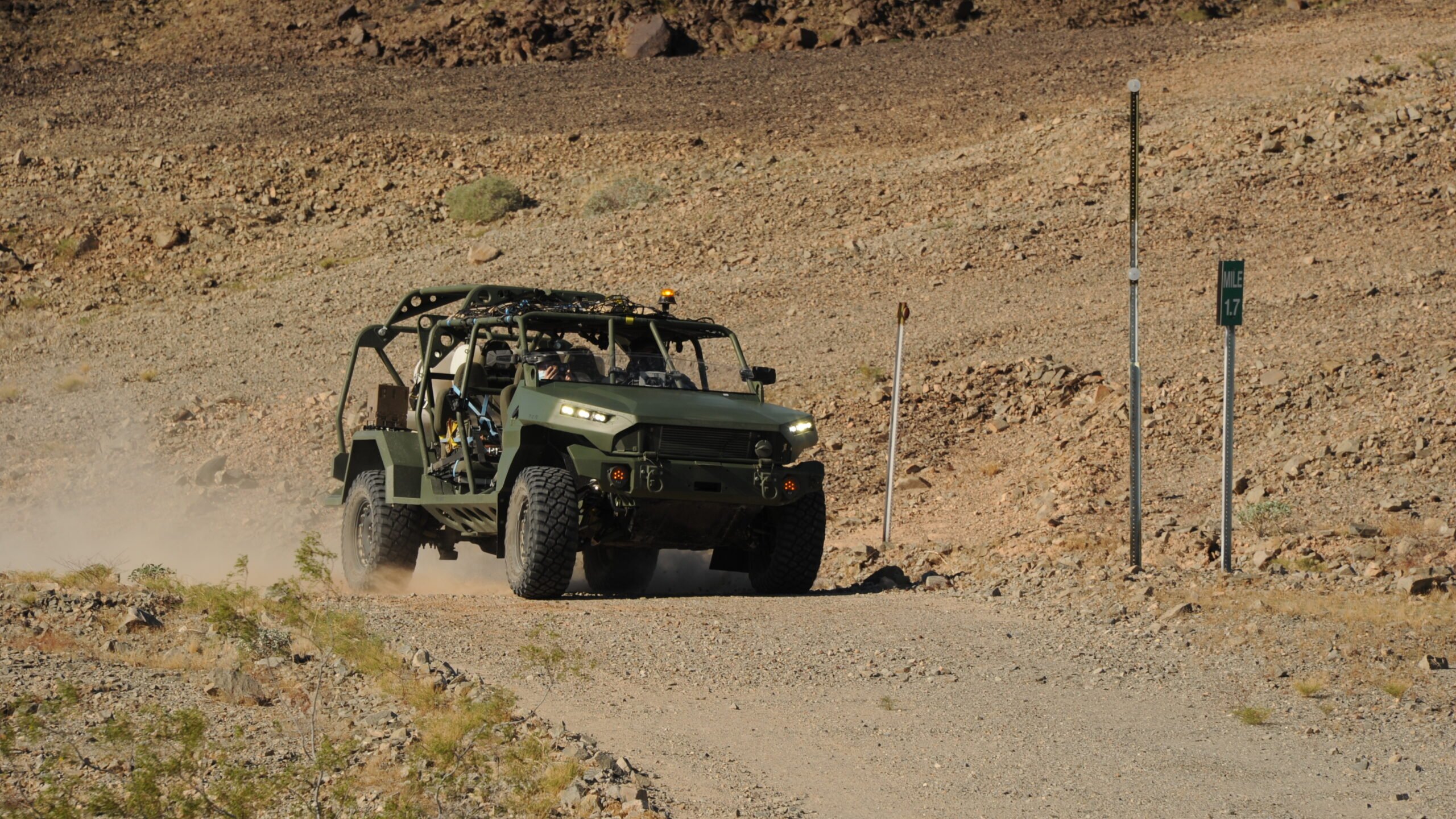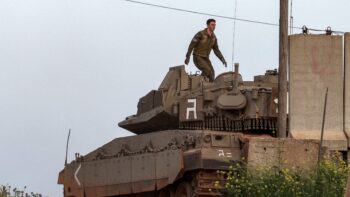
The Infantry Squad Vehicle undergoing testing at U.S. Army Yuma Proving Ground in February 2021. (Mark Schauer/US Army)
WASHINGTON: After a scathing Pentagon report dubbed the US Army’s new Infantry Squad Vehicle “not operationally effective” for combat missions against near-peer threats, the program office responsible is defending the multi-million dollar program, saying that’s not what it’s meant to do in the first place.
“The ISV is not designed to defeat or counter specific threats nor is it intended to operate as a combat fighting platform,” Steve Herrick, product lead for ground mobility vehicles with the Program Executive Office for Combat Support and Combat Service Support, told Breaking Defense in a statement Wednesday. “The primary role of the ISV is as a troop carrier to provide ground mobility to designated Infantry rifles squads reducing their need to cover large areas of terrain on foot.”
Herrick’s statement came several days after the Pentagon’s director of operational test and evaluation published a harsh review of the ISV in its annual report, listing several vehicle shortcomings ahead of the program’s full-rate production decision in May — many related to combat scenarios.
For instance, during the initial operational test and evaluation in August, the Pentagon testers said that the rifle company using ISVs failed to avoid enemy detection, ambushes and engagements during the majority of its missions. The report states the vehicle lacked ballistic armor, that soldiers’ individual weapons weren’t easily accessible in the event of an attack and it was difficult to operate a mounted machine gun while on the move.
While the program office said it is addressing several issues detailed in the report, such as engine cracks and steering loss, the office said that others, especially combat-related features, weren’t among the vehicle’s original requirements. An Army vehicle profile says the ISV is meant to “modernize Army Infantry Brigade Combat Teams” and to allow “Soldiers to close on an objective with less fatigue and greater readiness.”
Related: New Pentagon report censors details on weapons programs’ performance, flaws
“As there is no requirement for protection or armor, the unit on the ISV is intended to avoid threats, where possible,” Herrick said. “If engaged, units are intended to disengage and when appropriate disembark.”
Herrick said, that the program office “is reviewing options for stowage of multiple locations to aid in the ability to ensure the weapons are stored safely and can be retrieved quickly if the need to disembark from the vehicle is required.”
Among the problems not related to direct combat, the DOT&E report found reliability issues in desert conditions that included broken seat frames, engine cracks and overheating.
According to Herrick, DOT&E recommended that the ISV program office improve reliability and conduct follow-on testing to show the vehicle meets its requirements, redesign the seats to improve soldier comfort and better accommodate solider combat equipment, integrate a mounted radio to improve command and control at far ranges, and find ways to improve the ISV’s carrying capacity.
“The Army is currently addressing or evaluating DOT&E’s recommendations,” Herrick said. “For instance reliability enhancements are already in process, and the Army will conduct follow-on testing to confirm these enhancements.”
The annual report also noted that the ISV’s lack of a requirement for mounted communications equipment on the ISV degraded the situational awareness of soldiers on 62- to 300-mile missions. In response, Herrick was less committal about the Army addressing that issue. He said the “the program office is considering investigating a kit to integrate a vehicle-mounted radio configurations on the ISV.”
Herrick told Breaking Defense that program office has “multiple” improvements that have been confirmed on the current vehicle baseline, including the cracked and bent seat frames. Additional fixes are currently being assessed, Herrick said, “with most to be assessed through system-level reliability testing back at Yuma later in FY22, to include the engine concerns.” The Army tests the vehicle in Yuma, Ariz. and Fort Bragg, N.C.
GM Defense won the $214 million ISV contract in 2020 and delivered the first vehicle just 120 days after the contract award. GM previously referred Breaking Defense’s questions about the DOT&E report to the Army’s program office.
“We are committed to resolving issues — ensuring the ISV will provide an effective and reliable capability to the Soldier,” Herrick said.
Global interest in Iranian drones unlikely to wane despite failed Israel attack
Though virtually none of the estimated 170 drones Iran launched at Israel got through defenses, analysts told Breaking Defense there’s an eager market globally for Tehran’s relatively cheap, normally effective UAVs.


























